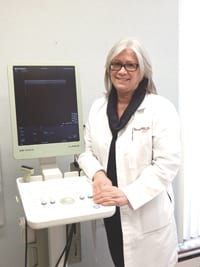Patient-Centered Medical Home: More Than a Buzzword
Accountable-care organization. Integrated delivery system. Alternative quality contract. Global budget. All of these are buzzwords that have been floating through the healthcare industry since the enactment of the Affordable Care Act.
More recently, the term ‘patient-centered medical home’ (PCMH) has captured the spotlight, but what does it really mean, and how does it differ from other healthcare-reform-related terms? Furthermore, what do doctors in Massachusetts need to know about it?
The PCMH movement has been gathering momentum in Massachusetts and throughout the nation. In Massachusetts alone, there are more than 46 medical homes participating in the official Medicaid PCMH initiative. This is a model of care that centers around the patient. The patient works with a primary-care provider who, along with a cross-functional care team, collectively cares for the patient and coordinates with other qualified providers as needed.
A key element that supports this concept is healthcare information technology and systems (including registries and information exchanges). The PCMH model has five core attributes:
• Comprehensive care. The PCMH is responsible for meeting a patient’s physical and mental-health needs throughout the care continuum. In order to achieve the goal of providing ongoing comprehensive care, the care team may work closely with a number of different physicians, advanced-practice nurses, physician assistants, nurses, pharmacists, social workers, educators, and care coordinators in the community. Depending on the size of the practice, virtual teams may be formed to link with patients and providers.
• Patient-centered care. In a medical-home setting, the physician and care team partner with the patient to understand the patient’s specific needs, culture, values, and preferences, and then factor these into the decision-making process. Patients are actively engaged in learning how to manage their own care to the extent they choose to be involved. Furthermore, this model recognizes the importance of including family in the conversation, ensuring that all involved parties are fully informed.
• Coordinated care. Care coordination is an important function of the medical-home model. This means that the medical home coordinates with all appropriate entities across the broader healthcare system, including specialty care, hospitals, home health care, and community services. Maintaining open lines of communication and transparency facilitates this process and ensures a smooth transition, particularly when patients are discharged from the hospital.
• Accessible services. The PCMH ensures access to patients by shortening wait times for urgent needs and enhancing office hours. During off hours, a member of the care team may be reached by telephone or by other communication methods, such as e-mail, so that there is no gap in coverage.
• Quality and safety. Commitment to ongoing initiatives that support quality and safety are important in the medical-home model. This may include using evidence-based medicine and other clinical-decision support tools to help guide the patient-care process. Engaging in performance measurement and measuring patient satisfaction are also important functions that will help drive quality improvement efforts.
For more information on how to become a certified PCMH, visit www.massmed.org/pprc, or call the Physician Practice Resource Center at (781) 434-7702.
Talia Goldsmith writes about practice issues for Vital Signs, a publication of the Mass. Medical Society, where this article first appeared.



Comments are closed.